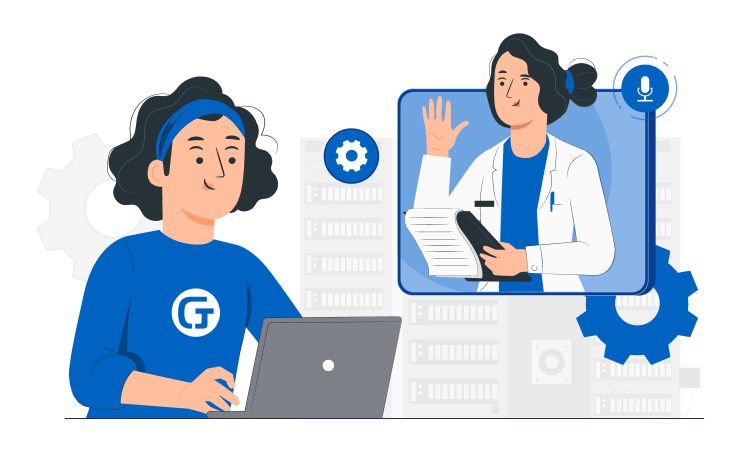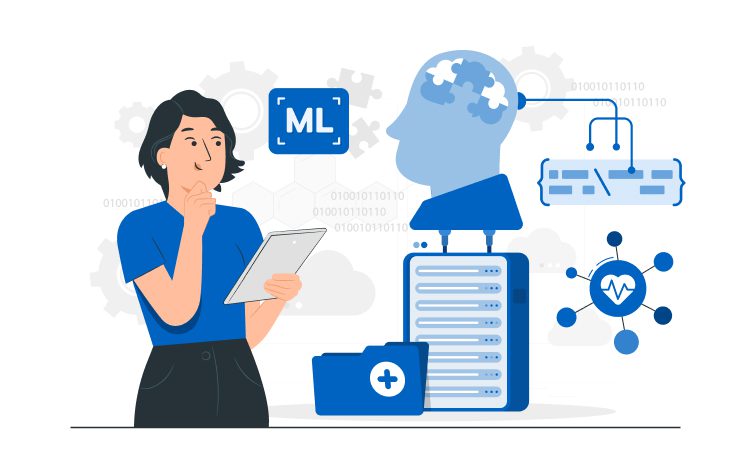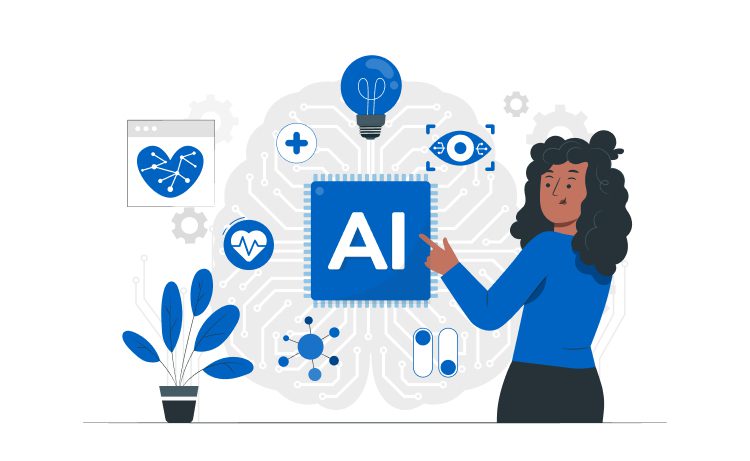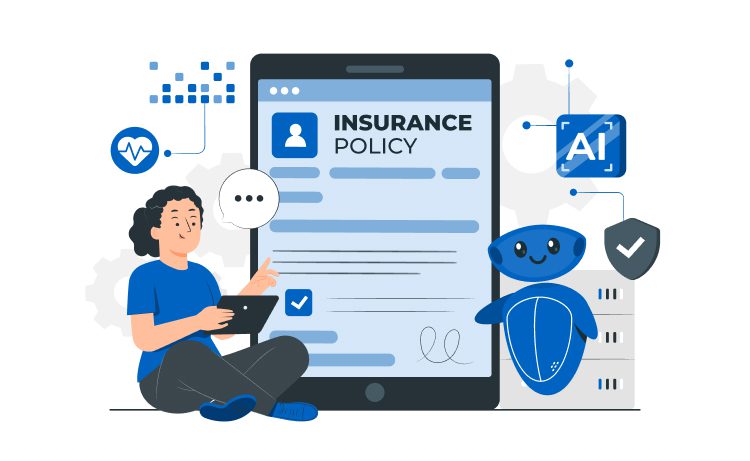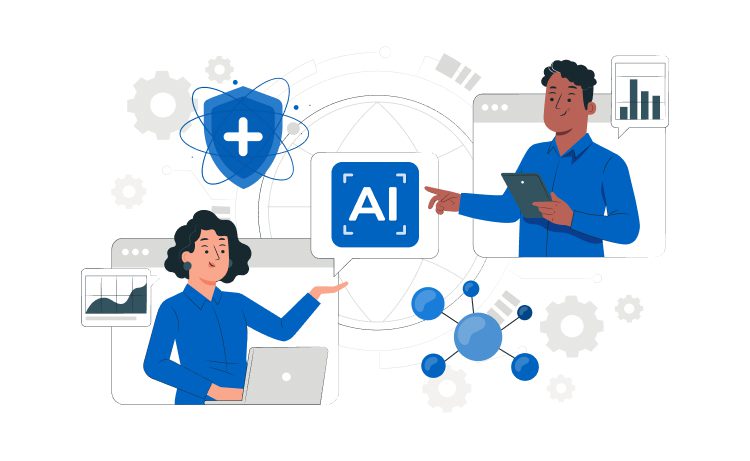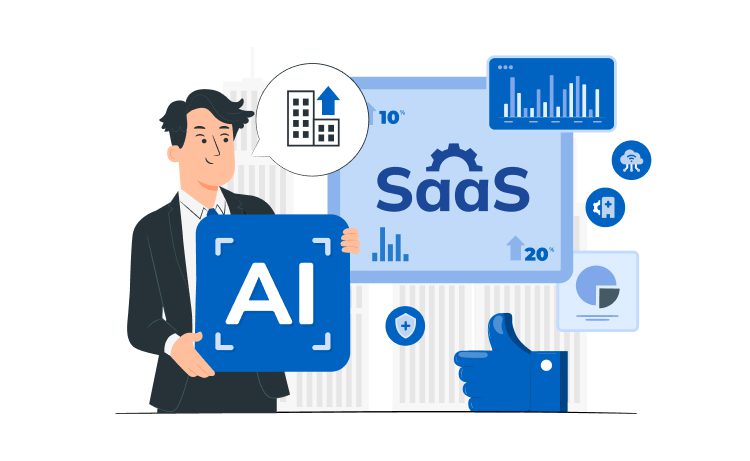
How AI Reshapes The Healthcare System In The US



The global healthcare system is rapidly changing — for the better. Automation presented by artificial intelligence plays a crucial role in these transformations. AI drastically improves healthcare quality, simplifies administration, leads to faster treatment distribution, provides better working conditions for medical staff, and boosts general industry productivity.
That being said, there is a debate to be had about the risks and challenges AI poses for the industry.
Content
What does AI mean in healthcare? In a nutshell, AI means a computer program or algorithm that performs certain tasks and processes information. It automates processes, gathers, and interprets data. Consequently, it can even offer solutions based on the conducted analysis.
Read more about artificial intelligence consulting services.
Growth in the AI health market is expected to reach $6.6 billion by 2021, and is projected to increase ten-fold within the next five years. The acquisition of AI startups is rapidly increasing: from $600 million worth in 2014 to $6.6 billion in 2020.
What has contributed to such a massive spike in AI healthcare startup investments?
In recent years, the field of medicine research has evolved exponentially. When combined with emerging technology, it offers promising innovation for the healthcare service in the US and around the world.
There are many drivers pushing such a transformation — let’s take a look at a few of them.
One of the leading factors driving change in the healthcare industry is the aging population. Thanks to advancements in medical services and a conducive economic environment, over the last decades, average life expectancy has grown significantly.
As of 2020, the average life expectancy in highly-developed countries has soared to over 80 years (79 for males and 82 for females).
By 2050, every fourth person in the US and Europe will be over 65 years. While increased life expectancy is an optimistic measure in terms of economic stability, it creates new requirements and puts increased pressure on the healthcare sector.
An aging population combined with ever-evolving lifestyle choices, requires a comprehensive change in our entire approach to the healthcare structure.
This means shifting from short-term, episodic care situations, to long-term, consistent, and properly managed care services. Additionally, this creates challenges when acquiring and holding onto skilled medical workers who are always in a deficit.
Technologies like AI are anticipated to positively alter the healthcare industry and sustain emerging sector requirements. Artificial intelligence has many applications when it comes to medical services, some of which are already in use.
All application areas can be scaled: from administrative tasks and paperwork assistance that can be quickly and easily implemented; to more complex situations that require more time, research, and trials.
According to an analysis from Accenture, important AI clinical health applications can potentially generate $150 billion in annual savings for the US healthcare economy by 2026.
One of the most accessible and easily implemented areas where AI comes in handy is in healthcare is data management. With the help of automation, various AI-enabled applications and tools easily store and manage large volumes of information, including patient history and personal data.
This significantly reduces the amount of manual work handled by doctors and nurses and improves administrative workflows.
For example, Johns Hopkins Hospital reported a 30% reduction in waiting time for patients before admittance after launching a digital command center in 2016 with 22 monitors to improve the patient experience and streamline flows.
Another startup geared toward simplifying workflows for medical institutions is Bay Labs. Their algorithms work to decrease manual error in an effort to provide a more seamless workflow by reducing the need to manually select and manage ECG views and high-grade clips.
The AI-based software automatically analyzes all relevant data and digital clips from a patient’s echocardiography study and proceeds to classify them according to key criteria. More than 4 million images were used to maximize the algorithm’s success rate.
Additionally, AI is a promising method for fostering a breakthrough in the research and diagnostics field. Some advancements in imaging and analysis can lead to the early discovery of diseases, and as a result, save lives.
The applications of AI for this purpose are endless as it can assist in the detection of an extremely wide range of pathologies.
The British startup, DeepMind, gathered information from over 15,000 patients in order to enable their algorithm to detect eye disease from optical coherence tomography (OCT). Their solution drastically cuts down the time required for analysis and interpretation, and increases diagnosis accuracy.
Another AI-enabled solution, iReveal, has been implemented to detect early-stage breast cancer via the enhanced monitoring of breast tissue density. Nearly 40% of women in the US have dense breast tissue, which often leads to obstacles in the mammography process aimed at spotting oncological tissue.
iReveal uses artificial intelligence to properly estimate breast density and detect patients with low sensitivity to digital screening. Their solution remains at the forefront of female breast cancer identification in the U.S.
Radiologic imaging and the x-ray are at the forefront of modern diagnostics. While the imaging accuracy is constantly improving, there are still many blind spots where MRI and CT imaging is unable to recognize early signs of disease.
AI tools serve as a means of augmentation for radiologists and provide tremendous amounts of assistance relating to the detection of many pathologies.
One such AI solution is Aidoc — software aimed to enhance the diagnosis of brain bleedings. The solution was approved by the U.S, and received FDA clearance. Aidoc was developed, with the help of radiologists, in order to detect severe intracranial hemorrhaging (ICH), using computer tomography images.
Aidoc can easily be implemented and used remotely to simultaneously provide accurate, high-grade scans.
Another health tech startup, Icometrix, detects brain pathologies and errors in clinical MRI imaging. Objectively, it detects and assesses abnormalities in white brain matter and monitors brain structure. Considering the vast range of identifiable neurological brain disorders, AI has plenty to offer in the field of MRI and CT scanning and image interpretation.
Technologies based on AI and machine learning are very promising in terms of early cancer identification. One of such solutions deployed by the Mayo Clinic, focuses on detecting pathological changes in the cervix that can lead to cancer.
By analyzing more than 60,000 cervical images from the National Cancer Institute (NCI), this solution can provide a much higher success rate (91%), compared to a skilled human expert (69%), when it comes to accurately detecting signs of disease.
With the implementation of AI-based applications, patients will be able to have more control when it comes to their condition and treatment. Automation will allow for remote patient monitoring, enabling more patients to be cared for at home rather than in hospital units, which can often be very expensive.
What’s more, the top 3 applications that represent the greatest value across the health-tech sector are robot-assisted surgery (worth $40 billion), virtual nursing assistants ($20 billion), and administrative workflow assistance ($18 billion).
Surgical robots can assist a doctor in many ways, including via the use of pre-gathered information and medical metrics to enhance a surgeon’s precision, helping monitor a patient’s condition, and by using medical records to provide valuable insights for future operations.
Other industry-leading, AI-enabled solutions for healthcare services are virtual nursing assistants. Virtual nursing consists of monitoring a patient’s condition and sending real-time alerts to doctors or care workers should a situation arise that requires more attention.
These tools are expected to drastically cut down on the amount of time doctors and nurses currently have to spend visiting patients.
Such a rapidly evolving sector as health-tech often sparks robust debate regarding unforeseen challenges and risks. One of the most debated issues involves the impact on the medical workforce.
While there is a lot of talk about the reduction of vacant positions for medical staff, overall, healthcare is one of the least-prone industries when it comes to automation.
In other words, although an impact on the workforce is inevitable, it won’t be disruptive for medical staff. According to an analysis by McKinsey, as an industry average, only about 15% of work hours can be automated. Still, the existing gap of in-demand, skilled personnel is expected to loosen even further.
Data safety is another important challenge. As the medical industry becomes more connected and automated, will patients’ sensitive data remain safe and protected? Cybersecurity is a huge concern in today’s world, especially among industries that have recently become digitized.
As more access to information means more risk, investing in proper software security in order to keep information intact is highly-necessary.
Despite the challenges, AI holds tremendous potential for the healthcare industry. With endless areas for application, AI is expected to improve home care and nursing services, enhance the accuracy of disease diagnostics, polish administrative workflows, and improve MRI and CT image interpretation.
As a result, these enhancements will ultimately lead to a better quality of medical services for patients who will receive more accurate diagnostics, and faster response times from doctors. In addition, nurses and doctors will also benefit from a more relaxed working environment.
Artificial intelligence solutions have the potential to save lives and reduce the cost of healthcare services for both service providers and receivers.
With many factors driving change across the industry, AI is anticipated to rapidly evolve, morphing and adapting to new technologies in order to sustain future challenges and demands.

